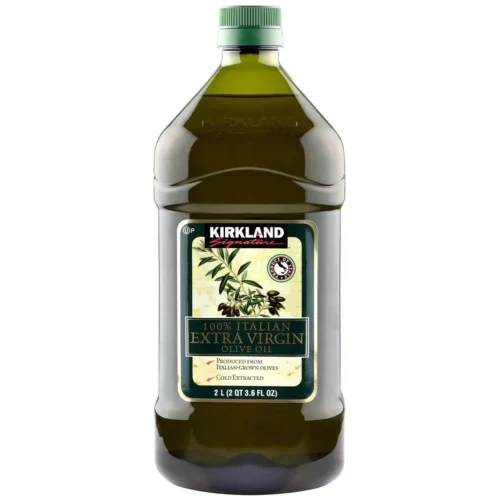Tip of the Day: John Dvorak’s Olive Oil Primer

In this edition of Tip of the Day, John C. Dvorak tells us everything we need to know about olive oil. Costco’s Kirkland Italian Oil is one of his favorite picks for price and quality.
Dvorak: …a few basics. Olive oil only keeps for two years, max, and has to be kept in…
Adam: This is what I was surprised by that.
Dvorak: This is the thing that you were surprised by. Yes, it was. You thought olive oil, like all oils, goes rancid, and the kind of rancidity that you achieve from these oils, butter does this, coffee beans do it, anything with oil. The rancidity is unhealthy. And olive oil is good for two years, and so when you buy olive oil, you should always check on the back of the bottle. It should have a either pick date, or use-by date, and it should be in just a round number. Costco’s extra virgin olive oil that they sell, Italian, in the green bottle, not the organic, but the regular stuff, usually has information on the back and you can tell, how, you know, because the batches change about once every four months at Costco, and you want the freshest, newest olive oil you can find, hopefully within a year. But after two years, it starts to go bad, and it’s not something that ages like wine, and so you have to be careful with olive oil. The other thing is that people don’t know, I just was thinking about it to add to this simple tip, is you have to, the olive oil, most olive oil, by a factor of almost all olive oil in the world, Spain makes most of it. And they make more olive oil than anybody by far. You take everybody else combined, it’s about what Spain makes. And most of their olive oil is blended into other olive oils, and you have to be careful, because it’s always, Italian olive oil’s always considered the best. Tuscan olive oil’s always considered the best of the best. They’re just a couple of things. I find Sicilian olive oil would be really good, but my favorite olive oil’s come from Provence, France, and California, which makes some terrific olive oils, but the production is so low, it doesn’t even show up on the list of olive oil makers. South American olive oils are also good. So the point is that you have to be careful with the Italian stuff, which is the most promoted, because you have to make sure that you read the label, and make sure it says produced in Italy with Italian olives, because it’ll often say packed in Italy, so it’ll say Italian olive oil, and it’ll say packed in Italy, and it’s Spanish olive oil, or even worse, Greece! Grecian olive oil is usually considered greasy.
Adam: I don’t like it, it has a weird taste.
Dvorak: Yes, it’s greasy, but I will say this, in Spain, there’s terrific olive oils around but very few of them get exported. They have varietal olive oils and all the rest.
The last tip is, ‘what is extra-virgin’ olive oil?
Adam: Yeah what is that? What is extra virgin? Extra, extra virgin?
Dvorak: Extra Virgin olive oil is an oil… and what you want to get is first-pressed extra virgin olive oil and you should first press, because you want it to be pressed by extraction, and by a press, and so I’ll just read from the thing. Extra virgin olive oil is, you mash up the olives, and you start to press them to get the oil. You can’t use heat or chemicals to extract the oil, it has to be just purely pressed, and the first pressing is the good stuff.
Adam: That’s the extra virgin?
Dvorak: That’s the extra virgin first press. First press.
Adam: Best price!
Dvorak: And so that’s what you want, it doesn’t cost that much more than the cheaper stuff, but as time goes, as they try to get more oil out of the olives, they’ll go to the point where they will extract it using a hexane, which is what most oils are, most oils you buy are hexane extracted.
Adam: You know, I think that you should give up on the vinegar book and do an oil book…
[No Agenda 1736]



